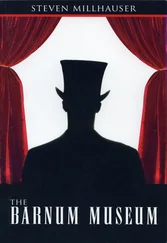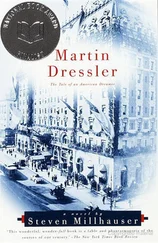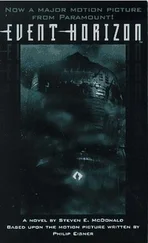Listen, Elena. Listen to me. I have something to say to you, which can’t be said.
As I train myself to cast off words, as I learn to erase word-thoughts, I begin to feel a new world rising up around me. The old world of houses, rooms, trees, and streets shimmers, wavers, and tears away, revealing another universe as startling as fire. We are shut off from the fullness of things. Words hide the world. They blur together elements that exist apart, or they break elements into pieces, bind up the world, contract it into hard little pellets of perception. But the unbound world, the world behind the world — how fluid it is, how lovely and dangerous. At rare moments of clarity, I succeed in breaking through. Then I see. I see a place where nothing is known, because nothing is shaped in advance by words. There, nothing is hidden from me. There, every object presents itself entirely, with all its being. It’s as if, looking at a house, you were able to see all four sides and both roof slopes. But then, there’s no “house,” no “object,” no form that stops at a boundary, only a stream of manifold, precise, and nameless sensations, shifting into one another, pullulating, a fullness, a flow. Stripped of words, untamed, the universe pours in on me from every direction. I become what I see. I am earth, I am air. I am all. My eyes are suns. My hair streams among galaxies.
I am often tired. I am sometimes discouraged. I am always sure.
And still you’re waiting, Elena — even now. Even now you’re waiting for the explanation, the apology, the words that will justify you and set you free. But underneath that waiting is another waiting: you are waiting for me to return to the old way. Isn’t it true? Listen, Elena. It’s much too late for that. In my silent world, my world of exhausting wonders, there’s no place for the old words with which I deceived myself, in my artificial garden. I had thought that words were instruments of precision. Now I know that they devour the world, leaving nothing in its place.
And you? Maybe a moment will come when you’ll hesitate, hearing a word. In that instant lies your salvation. Heed the hesitation. Search out the space, the rift. Under this world there is another, waiting to be born. You can remain where you are, in the old world, tasting the bitter berries of disenchantment, or you can overcome yourself, rip yourself free of the word-lie, and enter the world that longs to take you in. To me, on this side, your anger is a failure of perception, your sense of betrayal a sign of the unawakened heart. Shed all these dead modes of feeling and come with me — into the glory of the fire.
Enough. You can’t know what these words have cost me, I who no longer have words to speak with. It’s like returning to the house of one’s childhood: there is the white picket fence, there is the old piano, the Schumann on the music rack, the rose petals beside the vase, and there, look! — above the banister, the turn at the top of the stairs. But all has changed, all’s heavy with banishment, for we are no longer who we were. Down with it. You too, Elena: let it go. Let your patience go, your bitterness, your sorrow — they’re nothing but words. Leave them behind, in a box in the attic, the one with all the broken dolls. Then come down the stairs and out into the unborn world. Into the sun. The sun.
THE FIRST DOMES,the precursors, appeared here and there in affluent neighborhoods, on out-of-the-way roads, where they attracted a certain attention before growing familiar and nearly invisible. The few outsiders who actually witnessed them tended to dismiss them as follies of the rich, comparable to underground heating pipes for winter gardens or basement bowling alleys with automatic pinsetters. Even the early newspaper reports did not quite know what tone to take, shifting uneasily from technical description to ironic commentary, with moments of guarded praise. And that was hardly surprising, since the domes, while having features that were judged to be admirable, displayed themselves in a way that could readily strike an unsympathetic observer as pretentious or irritating.
Each of the early models, made of transparent Viviglas, was designed to fit directly over a house and its property. Now, emerging from the front or back door in summer, the owner of a dome could step comfortably into a world of air-conditioned lawns and gardens, thanks to a highly efficient system of filters and evaporator coils built into the Viviglas. There were other advantages. Recessed fluorescent lighting with dimmer switches permitted the property to be illuminated at night, so that you could read a book or newspaper in the cool outdoors on the hottest, muggiest evenings. Owners were encouraged to practice their golf swings, play badminton after dark, and enjoy a bit of night gardening, in the always perfect weather under the dome. In fact it was a boast of the manufacturer, much quoted at the time, that “Inside our dome, rain never falls.” As if that wasn’t enough, the manufacturer promised future models that would heat the enclosures in winter, though a number of difficulties still needed to be ironed out. It was above all as technological achievements that the early domes impressed most observers, who nevertheless remained skeptical. Questions were raised about the extent to which such excesses were likely to be shared by the average American household, since the domes at that time cost nearly as much as the estates they encapsulated. Nor could a number of journalists resist reflecting on the metaphorical implications of those glistening, crystalline structures, which enclosed the rich in little princedoms that insulated them even further from the everyday world.
There were, moreover, serious flaws in the early domes, which became apparent soon enough. Grackles, jays, and sparrows settled in great numbers on the dome-tops, where they blocked the sky and left broad smears of yellowish-white excrement. To make matters worse, many birds, deceived by the transparent Viviglas, flew directly into the thick walls and fell dead or injured to the ground below. Now the manufacturer had to send out daily cleaning crews, who washed the outsides of the domes, gathered up the dead and injured birds, and installed small boxes that made a grinding noise intended to discourage wasps, bees, birds, and Japanese beetles from settling anywhere on the shiny surfaces. Other problems began to reveal themselves. Rainwater as it evaporated left dusty streaks, which had to be removed; airborne particles gradually formed a layer of grime. Trouble developed even on the insides of the domes, where mist from sprinkler systems collected on the inner surfaces, increasing the humidity and obscuring the view. The manufacturer devoted itself assiduously to every complaint, while pointing out in its own defense that many of the little annoyances were due strictly to summer and might be expected to vanish with the season. The owners waited; and as the weather turned cold, frost formed colossal and oppressive patterns on the transparent surfaces, which were further darkened by the falling of the first snow.
One might have been forgiven, at this point, for predicting the death of the domes. In many instances the owners did in fact have them removed, a costly business requiring a small army of workmen and fleets of flatbed trucks. Others remained steadfast through the winter, during which a number of benefits became evident. No snow fell on the walks and driveways, bushes and hedges were protected from harmful layers of ice; the air inside the domes, though still unheated, grew pleasantly warm on cold but sunny afternoons. Such discoveries were offset by a burst of new drawbacks. Accumulations of thick-crusted snow froze to the tops of the domes, while spears of ice clung to the sides, and sweeps of high-drifted snow pressed up against the Viviglas doors. By the end of the first winter, it was clear to most customers that the domes were more trouble than they were worth.
Читать дальше












